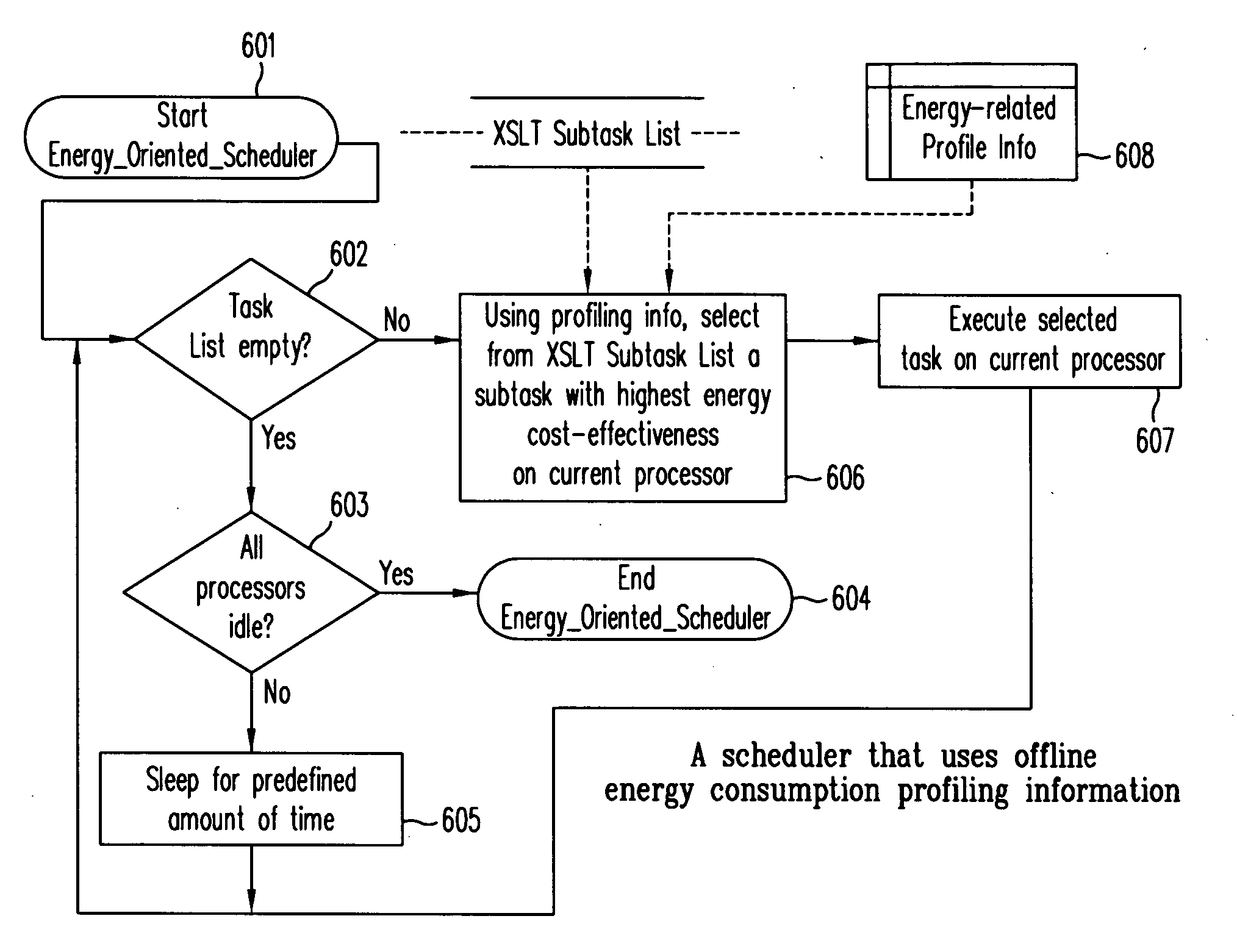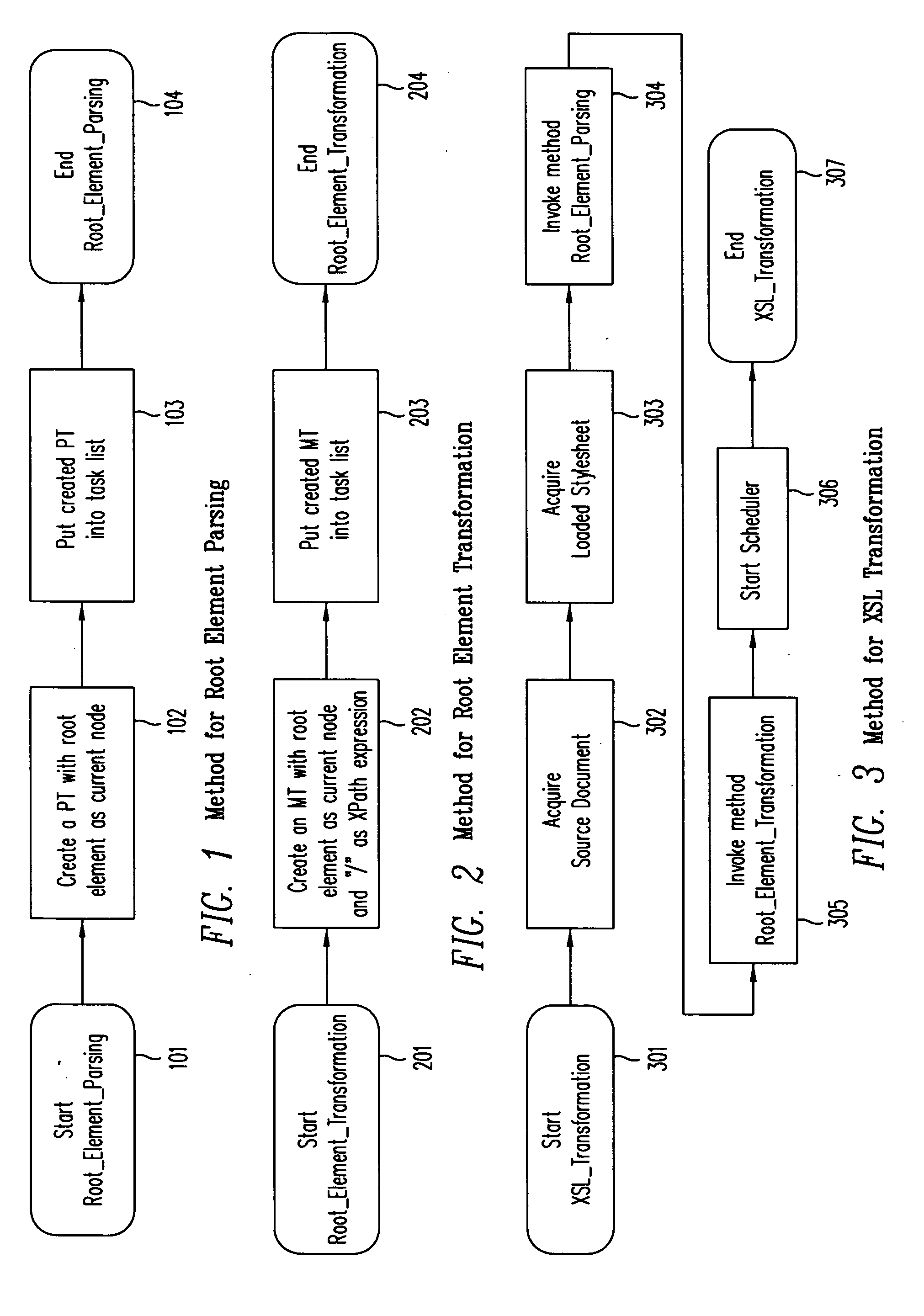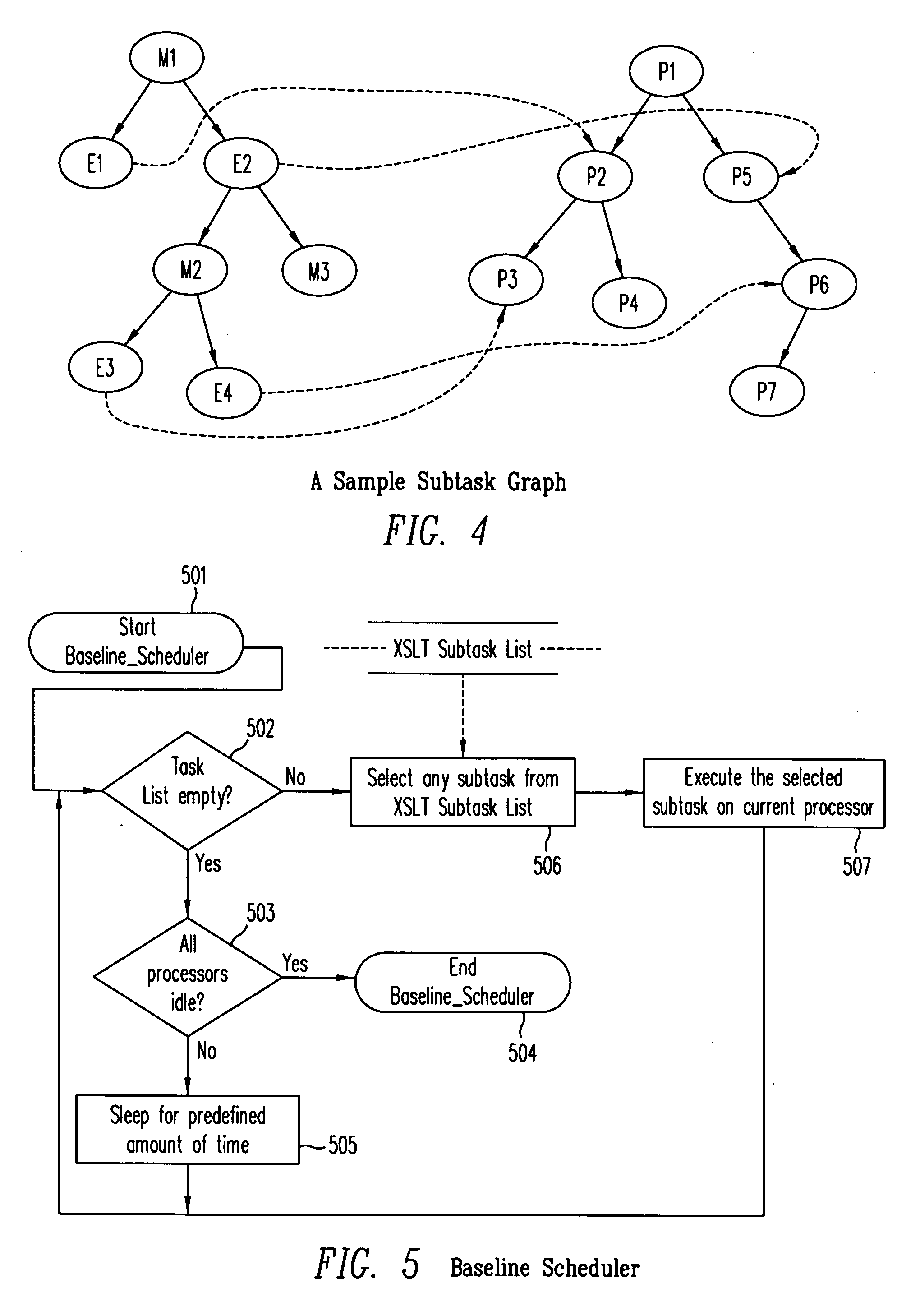Methods for supporting intra-document parallelism in XSLT processing on devices with multiple processors
a technology of xslt and document processing, applied in the field of parallel processing of xslt documents, can solve the problems of high cost, high processing cost, and high computational intensity of xslt processing, and achieve the effect of improving latency and latency
- Summary
- Abstract
- Description
- Claims
- Application Information
AI Technical Summary
Benefits of technology
Problems solved by technology
Method used
Image
Examples
Embodiment Construction
[0041] In this detailed description, the embodiments disclosed are, by way of example, applicable to a computer system in which all the processors or processes are capable of executing all task classes. The present invention, however, is not so limited. The present invention is applicable also to a computer system in which some or all of the computer processors or processes are customized to executing specific task classes.
[0042] According to one embodiment of the present invention, as illustrated in FIG. 3, an XSL transformation (XSLT) is started at step 301 on one of the processors (an “initial processor”) of a computer system with multiple processors. The source document and the style sheet are acquired at steps 302 and 303, respectively. If the style sheet is not already loaded in this initial processor, the style sheet is loaded and preprocessed.
[0043] At steps 304 and 305, a root element parsing method (illustrated in FIG. 1) and a root element transformation method (illustr...
PUM
 Login to View More
Login to View More Abstract
Description
Claims
Application Information
 Login to View More
Login to View More - R&D
- Intellectual Property
- Life Sciences
- Materials
- Tech Scout
- Unparalleled Data Quality
- Higher Quality Content
- 60% Fewer Hallucinations
Browse by: Latest US Patents, China's latest patents, Technical Efficacy Thesaurus, Application Domain, Technology Topic, Popular Technical Reports.
© 2025 PatSnap. All rights reserved.Legal|Privacy policy|Modern Slavery Act Transparency Statement|Sitemap|About US| Contact US: help@patsnap.com



